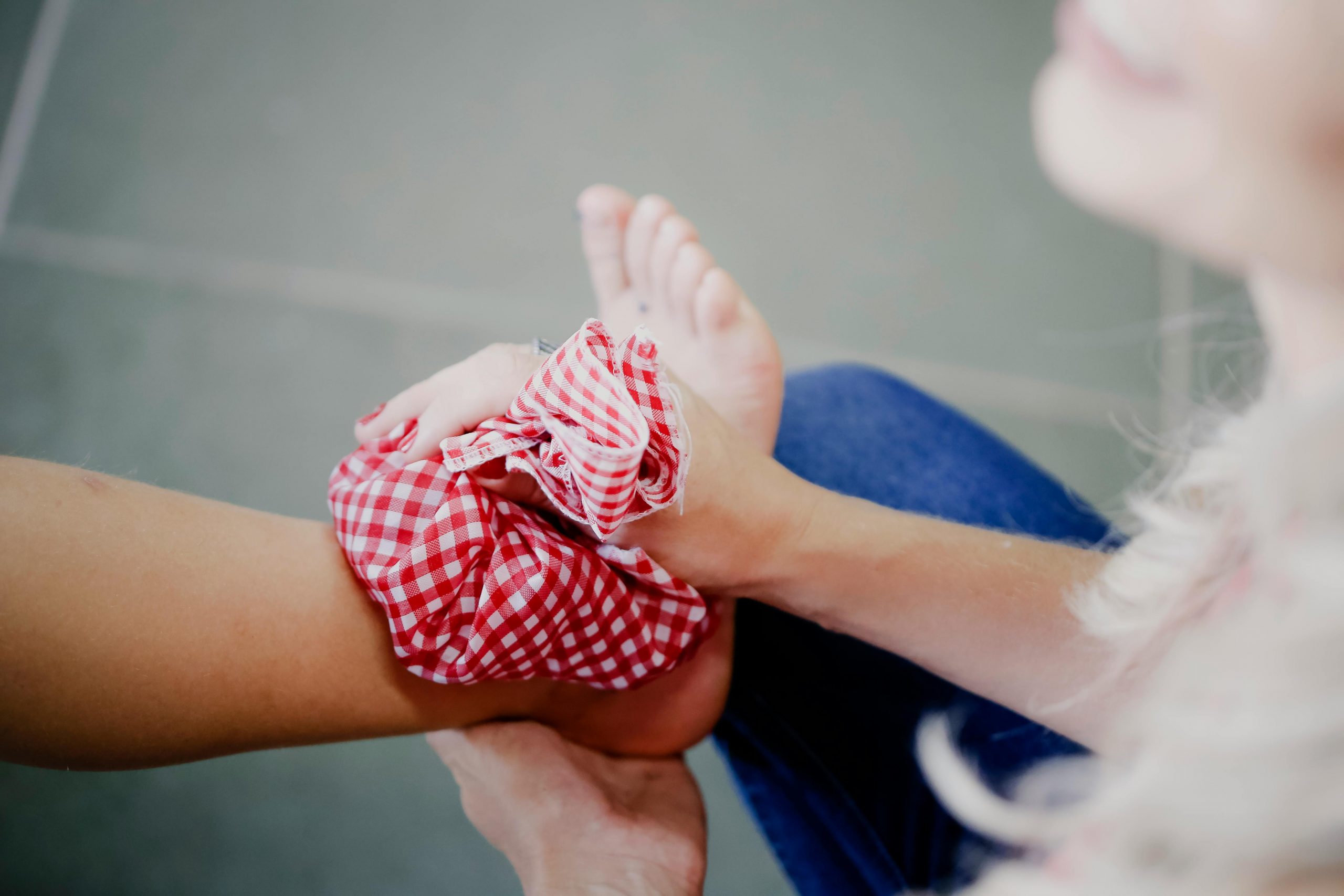
Spraining your ankle can be painful, frustrating, and—perhaps most surprisingly—disruptive to your sleep. When you lie down to rest, the throbbing pain often becomes more noticeable. If you’ve been asking yourself how to sleep with a sprained ankle, you’re not alone.
This guide will walk you through the best ways to relieve pain, reduce swelling, and improve your sleep while recovering from a sprained ankle. We’ll also cover tips for healing, when to see a doctor, and how to manage ankle pain at night while resting.
What Is a Sprained Ankle?

A sprained ankle happens when the ligaments that support your ankle stretch too far or tear, usually due to a twist or awkward landing. It’s one of the most common injuries and can range from mild to severe. Symptoms include:
- Swelling
- Bruising
- Pain when putting weight on the ankle
- Limited range of motion
- Tenderness to touch
Rest is essential for recovery, but nighttime can bring unique challenges. Lying still allows swelling to settle, and without distractions, the pain may feel stronger than during the day. That’s why knowing how to sleep comfortably is key to healing.
Why Ankle Pain Feels Worse at Night
It’s common for ankle pain to worsen at night, even if you’ve been managing fine during the day. Here’s why:
- Reduced movement: When you’re inactive, fluid can pool around the injured area, causing increased pressure and stiffness.
- Fewer distractions: Without the hustle of daily tasks, your brain becomes more aware of the pain.
- Lower cortisol levels: Cortisol helps reduce inflammation. At night, your body produces less of it, which can make pain and swelling worse.
- Body position: If your ankle isn’t properly supported or elevated, gravity can cause more blood and fluid to collect in the injured area.
Knowing this, let’s explore how to minimize discomfort and get the rest your body needs.
Best Sleeping Positions for a Sprained Ankle
1. Sleep on Your Back With Your Foot Elevated
This is the most recommended position. Place pillows under your injured ankle so it’s raised above the level of your heart. Elevation helps reduce swelling and throbbing by allowing fluids to drain away from the injury.
Tip: Use firm pillows or a folded blanket to keep your ankle stable and avoid rolling it while asleep.
2. Side-Sleepers: Use a Body Pillow
If you prefer sleeping on your side, use a long body pillow between your knees and ankles. Make sure your sprained ankle rests on top of the pillow to stay elevated and supported.
3. Avoid Sleeping on Your Stomach
Stomach sleeping puts pressure on your feet and ankles, increases the risk of twisting the joint, and may delay healing. Try to avoid this position while recovering.
How to Support Your Ankle While You Sleep
Supporting your sprained ankle is crucial for a better night’s sleep. Here are some helpful ways to stabilize and protect your ankle:
1. Use a Compression Wrap
An elastic bandage or compression sock can help reduce swelling and provide mild support. Make sure it’s snug but not so tight that it cuts off circulation.
2. Wear an Ankle Brace (If Recommended)
If your doctor has provided a soft or hard ankle brace, wear it to keep your ankle from moving in your sleep. It can prevent accidental rolling or bending of the joint.
3. Keep the Foot in a Neutral Position
Try to maintain your foot at a 90-degree angle from your leg. This position keeps your ligaments in a relaxed state and prevents further strain.
Nighttime Pain Relief for Sprained Ankles
Reducing pain before bed is essential for restful sleep. Try these methods:
1. Ice the Ankle Before Bed
Apply an ice pack wrapped in a towel for 15–20 minutes an hour before bedtime. Cold therapy reduces inflammation and numbs the pain, helping you relax.
2. Take Over-the-Counter Pain Relievers
Medications like ibuprofen (Advil, Motrin) or acetaminophen (Tylenol) can help relieve pain and inflammation. Follow the recommended dosage, and talk to your doctor if you have other health conditions.
3. Elevate During the Day Too
Don’t just elevate at night—doing so throughout the day can reduce fluid buildup, making nighttime rest more comfortable.
4. Warm Soak Before Bed (If Swelling Is Down)
After the first 48–72 hours, and if swelling has decreased, a warm foot soak may relax stiff muscles and ease discomfort. Don’t use heat too early, as it can increase swelling.
Creating a Sleep-Friendly Environment

Sometimes pain isn’t the only thing keeping you awake. Creating a calming environment can also improve sleep quality.
1. Keep the Room Cool & Dark
A slightly cool room can help you fall asleep faster. Use blackout curtains or a sleep mask to block light.
2. Use White Noise
A fan, white noise machine, or soothing playlist can drown out distractions and help you drift off.
3. Avoid Screens Before Bed
Phones, tablets, and TVs emit blue light, which can interfere with your natural sleep rhythm. Try reading a book or meditating instead.
What Not to Do When Sleeping With a Sprained Ankle
Avoid these common mistakes that can worsen your pain or delay healing:
- Don’t sleep without support. Letting your ankle dangle off the bed or lie unsupported can cause strain.
- Don’t wrap too tightly. Compression is helpful, but if the wrap cuts off circulation, it can lead to more problems.
- Don’t sleep in awkward positions. Avoid twisting or placing your ankle under your body while sleeping.
When to See a Doctor
Most sprained ankles heal with rest and care, but you should seek medical attention if:
- The pain gets worse or doesn’t improve after a few days
- You can’t put any weight on your foot
- There’s severe swelling or bruising
- You feel numbness or tingling
- The ankle looks deformed
A healthcare provider can rule out fractures or more serious ligament damage and may recommend physical therapy or imaging tests.
Recovery Timeline for a Sprained Ankle
Recovery time depends on the severity of your injury:
- Grade 1 (Mild): 1 to 3 weeks
- Grade 2 (Moderate): 3 to 6 weeks
- Grade 3 (Severe): 8 to 12 weeks or longer
Good sleep helps your body recover. Taking steps to manage ankle pain at night while resting can make a big difference in both your comfort and healing progress.
Final Thoughts
Sleeping with a sprained ankle doesn’t have to be a nightmare. By elevating your foot, using compression, taking pain relief measures, and creating a restful environment, you can reduce discomfort and get the sleep your body needs to heal. Always listen to your body, avoid positions that strain the joint, and don’t hesitate to see a doctor if symptoms persist.
With proper care and rest, you’ll be back on your feet in no time.


